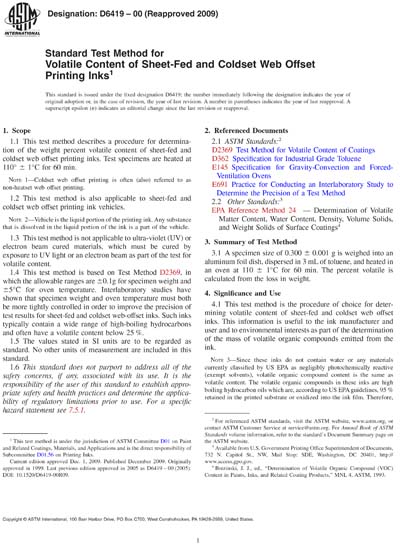Historical
ASTM D6419-00(2005)
Standard Test Method for Volatile Content of Sheet-Fed and Coldset Web Offset Printing Inks
1.1 This test method describes a procedure for determination of the weight percent volatile content of sheet-fed and coldset web offset printing inks. Test specimens are heated at 110 1C for 60 min.
Note 1—Coldset web offset printing is often (also) referred to as non-heatset web offset printing.
1.2 This test method is also applicable to sheet-fed and coldset web offset printing ink vehicles.
Note 2—Vehicle is the liquid portion of the printing ink. Any substance that is dissolved in the liquid portion of the ink is a part of the vehicle.
1.3 This test method is not applicable to ultra-violet (UV) or electron beam cured materials, which must be cured by exposure to UV light or an electron beam as part of the test for volatile content.
1.4 This test method is based on Test Method D 2369, in which the allowable ranges are ±0.1g for specimen weight and ±5°C for oven temperature. Interlaboratory studies have shown that specimen weight and oven temperature must both be more tightly controlled in order to improve the precision of test results for sheet-fed and coldset web-offset inks. Such inks typically contain a wide range of high-boiling hydrocarbons and often have a volatile content below 25 %.
1.5 The values stated in SI units are to be regarded as the standard. The values given in parentheses are for information only.
1.6 This standard does not purport to address all of the safety concerns, if any, associated with its use. It is the responsibility of the user of this standard to establish appropriate safety and health practices and determine the applicability of regulatory limitations prior to use. For a specific hazard statement see 7.5.1.
ASTM International [astm]

